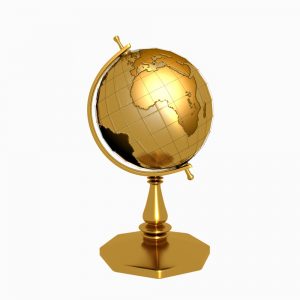
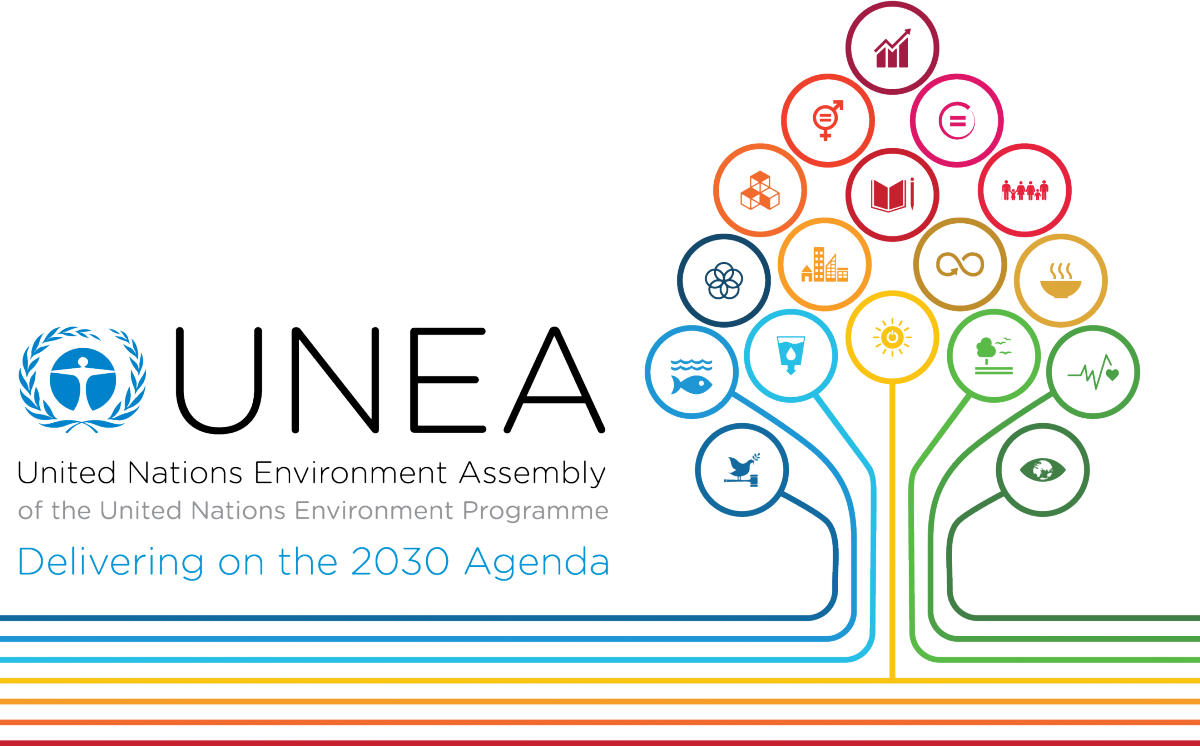
25 Landmark Resolutions to Drive Sustainability Agenda and Paris Climate Agreement at UN Environment Assembly
NAIROBI, Kenya, 27 May 2016 / PRN Africa / — The world’s environment ministers, gathered at the second session of the United Nations Environment Assembly (UNEA-2) in Nairobi on late Friday, passed far reaching decisions on issues such as marine litter, the illegal trade in wildlife, air pollution, chemicals and waste, and sustainable consumption and production – which are an integral part of the global action needed to implement the 2030 Agenda for Sustainable Development and the Paris Climate Agreement.
UNEP Executive Director Achim Steiner said, “The environment has always been, and will always be, at the heart of humanity’s prosperity. World nations recognized this in 2015 with global accords, such as the 2030 Agenda, the Paris Agreement, the Sendai Framework on Disaster Risk Reduction and the Addis Ababa Action Agenda.
“What we have seen in the last five days is the same political will and passion for change that brought about the groundbreaking international agreements of 2015. With global consensus affirmed, we are taking steps to bring about a real transformation of our development models. The United Nations Environment Assembly is providing leadership and guidance the world needs to take these unprecedented steps.
“In the decisions made here at this assembly for the environment, we see a significant directional shift that will inform Ministers’ decisions in their home countries. We will now need to see the bold and decisive commitment observed at UNEA transmitted at the national level to drive forward the 2030 Agenda and ensure a brighter future for people and planet.”
Thousands of delegates from 174 countries, 120 at the ministerial level, took part in UNEA-2 and associated side events on issues of global importance, including the Sustainable Innovation Expo and the Science-Policy Forum.
UNEA-2 sessions were attended by UN Deputy Secretary General Jan Eliasson; the President of the Republic of Kenya, H.E. Uhuru Kenyatta; UN Habitat Executive Director Joan Clos; and Vice-President of Iran and Minister of Environment Masoumeh Ebtekar. The sessions were presided over by Costa Rica’s Minister of Environment Edgar Gutiérrez, who took over from Oyun Sanjaasuren, former Minister of Environment and Green Development for Mongolia.
Among the 25 resolutions and actions decided at UNEA-2, the theme of which was “Delivering on the 2030 Agenda for Sustainable Development”, the following themes dominated:
2030 Agenda and Paris Agreement Implementation
The main theme of UNEA-2, Delivering on the 2030 Agenda, was a particular focus. The implementation of the work to achieve the Sustainable Development Goals (SDGs) will be a primary undertaking of the UN system, and the Assembly showed their full understanding of this.
UNEA asked UNEP to initiate new partnerships and strengthen existing ones, including with the private sector and civil society.
Building on its work in sustainable finance with the UNEP Inquiry into the Design of a Sustainable Financial System and the UNEP Finance Initiative, member states also asked UNEP to continue to build on its work at the intersection of finance and the environment.
With the Paris Agreement one the most significant environmental agreements in recent decades, UNEA also agreed that UNEP should accelerate support to countries, especially developing countries, to build national readiness capacity to implement the Agreement, build implementation capacity and capacity to access finance and technology.
Illegal Trade in Wildlife
A key issue at UNEA-2 was the illegal trade in wildlife, which is pushing species to the brink of extinction, robbing countries of their natural heritage and profiting international criminal networks.
UNEA-2 passed a resolution building upon previous commitments made at the first UNEA and General Assembly resolution 69/134, urging Member States to take further steps at the national level and through regional and international cooperation to prevent, combat and eradicate the supply, transit and demand related to the illegal trade in wildlife and wildlife products.
This includes implementing strategies and action plans, strengthening governance systems on issues such as anti-corruption and anti-money-laundering, supporting the International Consortium on Combating Wildlife Crime and the African Elephant Fund, and developing sustainable and alternative livelihoods for communities affected by the illegal trade in wildlife and its adverse impacts.
UNEP and partners – with the backing of celebrities such as Gisele Bündchen, Neymar Jr. and many others – also launched a new campaign, Wild For Life, to engage millions of members of the public to end the illegal trade in wildlife. Angola, which is hosting World Environment Day on 5 June, will make new commitments to combat the trade, particularly in ivory.
Marine Litter and Debris
It is estimated that there are 5.2 trillion pieces of plastic floating in our oceans, harming both the marine environment and biodiversity. To address this problem, member states resolved to encourage product manufacturers and others to consider the lifecycle environmental impacts of products containing microbeads and compostable polymers, including possible downstream impacts.
Delegates also sought the assistance of UNEP to assess the effectiveness of governance strategies and approaches to combat marine plastic litter and microplastics, and identify how to address gaps. They asked UNEP to help develop and implement national and regional action plans to target marine litter, with emphasis on those regions that are the largest sources.
Healthy Environment, Healthy People
World Health Organization estimates show that an estimated 12.6 million deaths are attributable to environmental factors each year, highlighting the importance of a healthy environment to healthy people. Several resolutions related to human health and the environment were passed. The resolution on sound management of chemicals and waste targeted actions on chemicals such as lead – exposure to which claimed an estimated 654,000 lives in 2010 and causes developmental damage to young children.
Delegates called on UNEP to develop research on actions that could be adopted to implement the Sustainable Development Goals (SDGs) relevant to the issue; asked the private sector to play a bigger role in an integrated approach to the sound management of chemicals and waste; and requested nations to ensure better recycling of lead-acid batteries at national or regional facilities.
Another resolution called on UNEP to establish a global research network on the threat posed by sand and dust storms and integrate the issue into its work. Sand and dust storms contribute to lowered air quality – a worldwide problem that claims seven million lives each year.
Other resolutions
Armed conflict and its relation to the environment was also a significant source of discussion at UNEA-2. A symposium focused on environment and displacement : root causes and implecations.
One decision called on Member States to take appropriate measures to ensure compliance with international obligations under international humanitarian law in relation to the protection of the environment in times of armed conflict.
Resolutions on food waste and sustainable consumption and production, which both impacts on the 2030 Agenda and Paris Agreement in terms of increasing emissions and resource use and holding back efforts to reduce hunger, were passed. The resolution called for increased efforts and cooperation to decrease the one third of all food produced each year that is lost or wasted and committed Member States to achieving SDG 12, which focuses on Sustainable Consumption and Production.
SOURCE United Nations Environment Programme (UNEP)
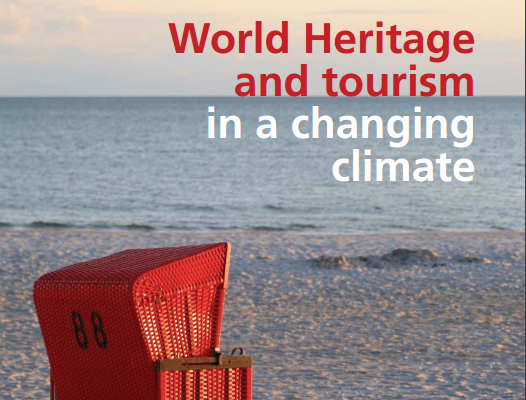
World Heritage sites at risk from climate change – joint UN report
NEW YORK, 27 May 2016 / PRN Africa / — Some 31 natural and cultural World Heritage sites in 29 countries across the world are becoming increasingly vulnerable to the effects of climate change, a new report released by the United Nations has found.
The World Heritage and Tourism in a Changing Climate report documents climate impacts including increasing temperatures, melting glaciers, rising seas, intensifying weather events, worsening droughts and longer wildfire seasons, at iconic tourism sites such as Venice, Stonehenge and the Galapagos Islands.
It also covers other World Heritage sites such as South Africa’s Cape Floral Kingdom; the port city of Cartagena, Colombia; and Shiretoko National Park in Japan, the UN Environment Programme (UNEP) said in a press release.
“World governments, the private sector and tourists all need to coordinate their efforts to reduce carbon emissions and to protect the world’s most treasured cultural and natural resources from the impact of tourism activities,” said Elisa Tonda, head of UNEP’s Responsible Industry and Value Chains Unit.
“Policies to decouple tourism from natural resource impacts, carbon emissions and environmental harm will engage a responsible private sector and promote change in tourists’ behaviour to realize the sectors’ potential in some of the world’s most visited places,” she added.
In addition to UNEP, the report was prepared by the UN Educational, Scientific and Cultural Organization (UNESCO) and the Union of Concerned Scientists (UCS).
Because World Heritage sites must have ‘Outstanding Universal Value,’ the report recommends that the World Heritage Committee consider the risk of prospective sites becoming degraded by climate change before they add them to the list.
In particular, the report highlights the urgent need to identify the World Heritage sites that are most vulnerable to climate change, and to implement policies and provide resources to increase resilience at those sites.
In addition, the report urges increased global efforts to meet the Paris Agreementclimate change pledges in order to preserve World Heritage sites for future generations.
“Globally, we need to better understand, monitor and address climate change threats to World Heritage sites,” said Mechtild Rössler, Director of UNESCO’s World Heritage Centre. “As the report’s findings underscore, achieving the Paris Agreement’s goal of limiting global temperature rise to a level well below 2 degrees Celsius is vitally important to protecting our World Heritage for current and future generations.”
The report also recommends engaging the tourism sector in efforts to manage and protect vulnerable sites in the face of climate change, and to educate visitors about climate threats.
“Climate change is affecting World Heritage sites across the globe,” said Adam Markham, lead author of the report and Deputy Director of the Climate and Energy Program at UCS.
“Some Easter Island statues are at risk of being lost to the sea because of coastal erosion. Many of the world’s most important coral reefs, including in the islands of New Caledonia in the western Pacific, have suffered unprecedented coral bleaching linked to climate change this year. Climate change could eventually even cause some World Heritage sites to lose their status,” he added.
The report includes a complete list of World Heritage sites that are at risk.
SOURCE UN News Centre
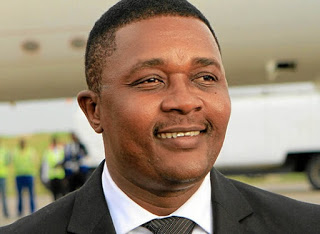
Zimbabwe Tourism in Remarkable Recovery: Dr Walter Mzembi
Zimbabwe’s tourism is now leading in sectoral growth with 11 percent contribution to Gross Domestic Product, displaying remarkable recovery, says Dr Mzembi, the Minister of Tourism and Hospitality Industry and Hospitality Industry of Zimbabwe, and Southern African Development Community endorsed candidate for the position of UNWTO Secretary General that falls vacant in 2017.
Minister Mzembi said the tourism industry was expected to play a major role in Zimbabwe’s economy, with a vision to have a $5 billion tourism boom from five million arrivals, contributing 15 percent to GDP by 2020.
“So, tourism has been the most significant rapprochement and re-engagement tool for the Republic of Zimbabwe and it is now an acknowledged unifying force and a tool for public diplomacy and the economy has largely been stabilised by its receipts income, securing peace in the process,” he said.
“Anything in a Government that is economically significant is enabled, facilitated and protected. We advanced tourism in Zimbabwe to a point where it is now a recognised economic pillar amongst three other pillars that include agriculture, mining and manufacturing,” said Minister Mzembi.
“In fact, it is cross-subsidising the Zimbabwean economy and GDP contribution now stands at 11 percent. We were able to advance to that point of recognition and it means that the whole Government works for the sector’s advancement. It starts with the security sector guaranteeing peace because peace is a critical success factor,” he said.
Minister Mzembi said Zimbabwe’s major product was peace as “it does not matter how attractive a destination is, if it is situated in a conflict situation it doesn’t sell. Tourism cannot sell conflict.”
He said the re-engagement and rapprochement carried out by the Government had resulted in the growth of the tourism sector. “Going forward, it (tourism sector) is paying the bills for Government functions. Meanwhile, the world has significantly softened its stance towards Zimbabwe, with European Union sanctions partially lifted and there is intense business reconnaissance missions into Zimbabwe and China would attest to this,” said Dr Mzembi.
“When State diplomacy fails, even without guns being fired at times, it can invent conditions equivalent to those of a war zone. We must never allow a situation where after traditional diplomacy fails, it precipitates war before we invoke the inherent diplomatic characteristics of tourism,” he said.
“When people arrive in destinations, they are agents of goodwill. Usually they bring an olive branch, so today’s 1,2 billion world arrivals can easily be turned into peace ambassadors of this world. The expenditure that they generate in destinations creates tourism economies which today stands at $1,4 trillion.”
Minister Mzembi chronicled how after the formation of the Government of National Unity in 2009, he was tasked with reaching out to the country’s traditional tourist source markets which had issued travel advisories against Zimbabwe.
The culmination of the efforts was the regularization of the country’s membership to world tourism bodies, with the ultimate being the country’s joint hosting by Zimbabwe and Zambia, the 20th Session of the General Assembly of the United Nations World Tourism Organization in Victoria Falls in 2013. The versatile Minister, Dr Wlater Mzembi was at the forefront of organizing one of the most successful General Assembly that was confirmed by Dr Taleb Rifai, the current Secretary General of UNWTO.
In the same vein, Dr Mzembi has demonstrated clear leadership of the tourism sector not only in his country, but globally, and he has shown that he has the gravitas to provide leadership of the tourism sector effectively. He is in the race for the UNWTO Secretary General position that falls vacant in 2017, and he has pronounced himself and answered to the cal by several countries for him to lead the tourism body. He has declared his candidature, with support also coming from the Southern African Development Community (SADC) and soon the African Union is likely to endorse him at the forthcoming African Union (AU) Heads of States and Government Summit to be held in July 2016 in Kigali, Rwanda as the AU candidate for the position. A cursory look at his maneuvering appears clearly that he is the most preferred candidate, a man that the world can trust, a man that the international tourism community can support to lead the UNWTO to drive a global agenda and consolidate on the legendary legacy to be left by Dr Taleb Rifai on one of the most dynamic and fast growing economic sectors in the world.
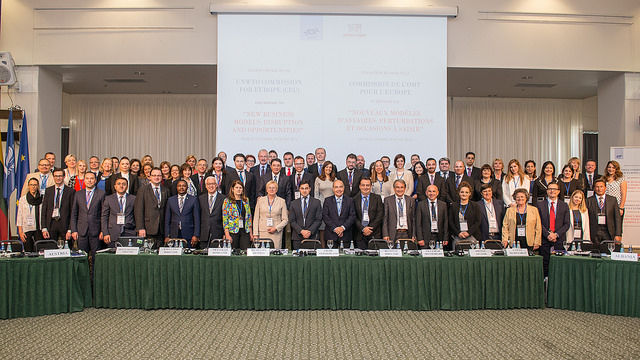
UNWTO Europe Meeting discusses digitalization and new business models
Vilnius, the capital city of Lithuania, this week hosted representatives of 34 countries for the 60th Meeting of the UNWTO Commission for Europe. Discussions focused on major tourism trends and the priorities and agenda of the Organization for the region. The meeting was followed by a seminar on new business models.
“In 2015, there were 29 million more international tourists in Europe than the previous year, raising the total in the region to 609 million. At a time when economic recovery is still quite slow, tourism has been a major contributor to the European economy, generating 404 billion euros in exports,” said UNWTO Secretary-General Taleb Rifai opening the meeting.
“Although the sector continues to progress, many challenges face us. These include a rapidly changing consumer market, the impact of technology, the emergence of new business models, manmade and natural crises, and the quest to make our sector more sustainable and more responsible,” he added.
“Tourism in Lithuania has large growth potential and after this event we have even more stimulus to keep promoting our country and look for new possibilities to support tourism,” said Evaldas Gustas, Minister of Economy of Lithuania and Vice-Chair of the UNWTO Commission for Europe.
Safe, secure and seamless travel, the role of tourism in the Sustainable Development Goals (SDGs) and the International Year of Sustainable Tourism for Development in 2017 were discussed at the Commission meeting.
The following seminar explored the impacts of new business models, and in particular of the so-called ‘sharing economy’, on the tourism sector, and how ‘traditional’ businesses are responding. Speakers included BeMyGuest, the Lithuanian Hotels and Restaurants Association, Room Mate Hotels, TripAdvisor, ReviewPro, HOTREC, NBTC Holland Marketing, the European Commission, the Tourism Chamber of the Republic of Lithuania and Airbnb. Participants agreed that the opportunities afforded by new business models should be embraced but that measures should be taken to ensure both a level playing field and the protection of consumers.
On the occasion of his visit to Lithuania, UNWTO Secretary-General Taleb Rifai met Lithuanian private sector representatives and the Chamber of Commerce. “Sustainable measures and other tourism policies should be applicable to all business models, so that all stakeholders across the value chain hold the same level of responsibility with regard to the sector,” said Mr Rifai. “Only by working in cooperation and by building bridges will the tourism community be able to capitalize on the strong potential of the sector,” he added.
In 2015, Europe remains the world’s most visited region with 609 million international tourist arrivals (51% of the world’s total). International tourism generated 404 billion euros in exports, 3% more than in 2014.

Seychelles delegation attended the first world conference on Tourism Development in Beijing China
The Seychelles delegation headed by Sherin Naiken, CEO of the Seychelles Tourism Board attended the first world Conference on Tourism Development in the Peoples Great Hall of China, Beijing on Thursday the 20th May 2016. The event which was jointly organised by the China National Tourism Administration and the UNWTO was attended from the Seychelles side by Vivianne Fock Tave, the Seychelles Ambassador to the Peoples Republic of China, Jean luc Lai Lam, Seychelles Tourism Board Manager for China, Stephanie Lablache and Lee Huan Huan both Seychelles Tourism Board Senior Marketing Executives based in Seychelles and Beijing respectively.
Important guests at the event were Mr. Li Keqiang, Prime Minister of the Republic of China, Mr.Filipe Jacinto Nyusi, President of Mozambique, Mr. Taleb Rifai, Secretary-General of the World Tourism Organisation, who all addressed the 1000 delegates at the opening ceremony. The delegates were from over a hundred countries which consisted of both Government organisations as well as leading tourism partners from the private sector.
The Summit agenda was on sustainable Development through Tourism, Tourism for Poverty Reduction, Tourism for Peace and it was moderated by the famous CNN Televison Anchor Richard Quest. The day ended with the adoption of the Beijing Declaration.
Topic which relates more to Seychelles and which was the most interesting debate of the day was attaining the sustainable development goals (SDGs) through tourism. The debate centred on what countries are required to do to use tourism as the vehicle to achieve their SDG’s. Indeed, the various participants in the debate stressed on the need to have a more cohesive approach between the various units—Public and private if the SDGs are to be achieved. Amongst the various subject matter raised, were the role of the public and private sector, the need to work together and the need for the SDGs to be understood by all levels of the Government as well as by the business community. As one participant shared “all the ministers in the Government are defacto a minister for tourism!”
The head of delegation, Ms Naiken, had a lot to share to other delegates in between sessions as the summit did not have open plenary sessions. “Seychelles have had decades of experience and lots success stories in sustainable development” shared miss Naiken to a delegate “The cornerstone of every policy and law in Seychelles has been sustainability.”
The new sustainable development agenda, which came into effect in January 2016, succeeded the Millennium Development Goals (MDGs) launched in 2000 to which Seychelles managed to attain almost all of it, some even before the process started. Seychelles is well under way to attain the new set of targets.
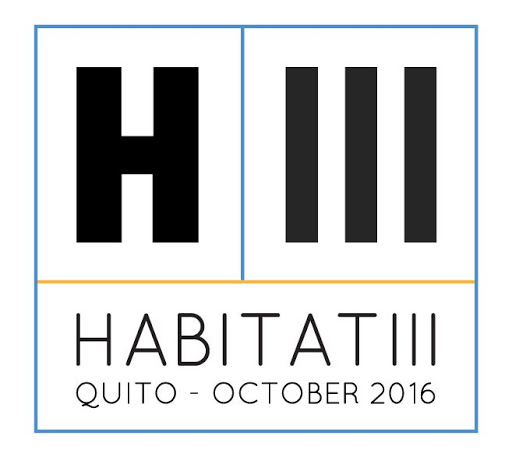
UN Report: The Earth is not flat – it is urban
While cities have emerged over the past 20 years as the world’s economic platforms for production and innovation, helping millions escape poverty through better jobs and improved quality of life, mass urbanization has also led to overcrowding, deepened inequalities and triggered a raft of environmental and health challenges, according to a new United Nations report.
The dramatic shift towards urban life has profound implications for energy consumption, politics, food security and human progress, says the inaugural edition of the World Cities Report, compiled by the UN Human Settlements Programme (UN-HABITAT), which stresses that although some of this change is positive, poorly planned urbanization can potentially generate economic disorder, congestion, pollution and civil unrest.
On the theme, ‘Urbanization and Development: Emerging Futures,’ the report presents an analysis of urban development of the past 20 years and reveals, with compelling evidence, that there are new forms of collaboration and cooperation, planning, governance, finance and learning that can sustain positive change.
While noting that two-thirds of the global population is expected to live in cities by 2030 and produce as much as 80 per cent of the global gross domestic product (GDP), the report unequivocally demonstrates that the current urbanization model is unsustainable in many respects.
In the run up to HABITAT III – shorthand for the major global summit formally known as the UN Conference on Housing and Sustainable Urban Development, set to be held in Quito, Ecuador, on 17-20 October 2016 – the report conveys a clear message that the pattern of urbanization needs to change to better respond to the challenges of our time, to address issues such as inequality, climate change, informality, insecurity, and unsustainable forms of urban expansion.
UN-Habitat Executive Director, Dr Joan Clos, said: “In the twenty years since the Habitat II conference, the world has seen a gathering of its population in urban areas. This has been accompanied by socioeconomic growth in many instances. But the urban landscape is changing and with it, the pressing need for a cohesive and realistic approach to urbanization.
“A ‘New Urban Agenda’ is required to effectively address the challenges and take advantage of the opportunities offered by urbanization,” said Mr. Clos. As the urban population increases, the land area occupied by cities is increasing at a higher rate. It is projected that by 2030, the urban population of developing countries will double, while the area covered by cites could triple.
Such urban expansion is wasteful in terms of land and energy consumption and increases greenhouse gas emissions. The urban centre of gravity— at least for megacities, has shifted to the developing regions. In 1995, there were 22 large cities and 14 megacities globally; by 2015, both categories of cities had doubled, with 22, or 79 per cent of the megacities located in Latin America, Asia and Africa. The fastest growing urban centres are the medium and small cities with less than one million inhabitants, which account for 59 per cent of the world’s urban population.
Noting that urbanization provides a great opportunity to achieve the Sustainable Development Goals (SDGs), the report warns that while in some cities, for some people, former New York City Mayor Michael Bloomberg’s “urban renaissance” is occurring, for most of the world this is absolutely not the case.
“Urban policy failure has been spectacular in its visibility and devastating in its impacts on men, women and children in many cities,” says the report, stressing that there are too many people living in poor quality housing without adequate infrastructure services such as water, sanitation, and electricity, without stable employment, reliable sources of income, social services, or prospects for upward social mobility.
“Prosperity was once described as a tide that raised all boats, but the impression today is that prosperity only raises all yachts,” the report underscores, setting out the key elements of a comprehensive approach to a ‘New Urban Agenda’ which must be bold, forward looking, and tightly focused on problem-solving with clear means of implementation.
For the new Agenda to take hold, governments, international organizations, bilateral aid and civil society must recognize the transformative power of cities and their unique capacity to generate new forms of economy, with greater sensitivity to the environment, culture, and social life. Moreover, the report argues that for governments, “adopting urban policies means that they accept that the world consists not just of national macro-economies, but also of urban areas, with many different sizes, forms and characters.”
“This is why today we stand at a Galilean moment. The Earth is not flat. It is urban. If we do not recognize that the settlement down the road is related to where we live, we shall all suffer, and unnecessarily so,” warns the report’s final chapter, urging global political leaders to recognize that the world is very different than it was 30 years ago – that the challenges facing our cities “are footprints of our future, warning us of the world to come and imploring us to do better.
“It is for the Habitat III conference to steer the ‘emerging futures’ of our cities on to a sustainable, prosperous path,” the report concludes.
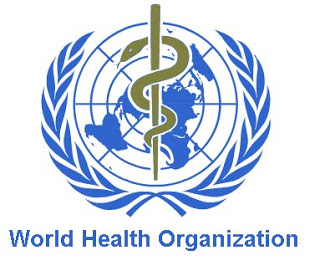
UN WHO: Zika on doorstep of Africa
The United Nations health agency today confirmed that the Zika virus strain circulating in Cabo Verde, an island nation off the northwest coast of Africa, is the same as the one responsible for the outbreaks linked to neurological disorders and microcephaly in South America.
The virus was most likely imported from Brazil, according to a press release issued by the World Health Organization (WHO).
As of 8 May 2016, there have been 7,557 suspected cases of Zika in Cabo Verde. Three cases of microcephaly have been reported from Cabo Verde with one case by the Centers for Disease Control and Prevention (CDC) after being sent to the United States. So far, no case of Guillain-Barre Syndrome (GBS) has been reported in Cabo Verde.
“The findings are of concern because it is further proof that the outbreak is spreading beyond South America and is on the doorstep of Africa,” said Matshidiso Moeti, WHO Regional Director for Africa. “This information will help African countries to re-evaluate their level of risk and adapt and increase their levels of preparedness.”
WHO warned that as a first step, these countries should heighten risk communication to pregnant women to raise awareness of complications and promote protection steps to avoid mosquito bites as well as sexual transmission. In addition, countries should increase their surveillance for Zika transmission and congenital malformations, such as microcephaly, as well as Guillain-Barré syndrome.
WHO will continue to review existing risk assessments, increase surveillance, and assess laboratory testing capacity and support community engagement and risk communications in priority countries through its Zika Virus Disease Incident Management System launched in February in the capital city of Brazzaville, the Republic of the Congo, and at its Geneva headquarters.
In addition, WHO and its partners will support the countries in the African region to step up preparedness efforts for early detection, confirmation and management of potential complications related to Zika infection. The response will build on investments in strengthened systems made in West Africa during the Ebola emergency.
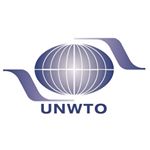
UN chief: Saddened by EgyptAir flight crash
United Nations Secretary-General Ban Ki-moon is “deeply saddened” by the crash of EgyptAir’s flight MS804 yesterday, his spokesman said today in a statement.
According to preliminary reports, 66 people were on board the Paris-to-Cairo flight crossing the Mediterranean Sea.
“He sends his heartfelt condolences to the families of the victims and to the governments and peoples affected by this tragedy,” said the statement.
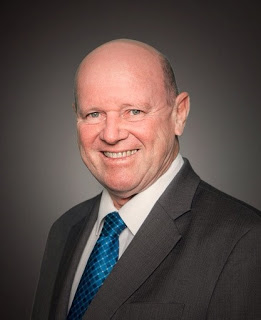
PATA UNWTO Debate in Guam: Seychelles Minister VIP panel guest
During the course of his visit to the US island of Guam as a VIP invited guest at the 2016 PATA Summit being hosted on the island at the Dusit Thani resort, Alain St.Ange, Seychelles Minister for Tourism & Culture has once again appeared on a high level panel of prominent regional personalities debating the nature of tourism and the best way forward for island economies.
Hosted by the Guam Visitors Bureau, the 2016 annual PATA (Pacific Asia Travel Organisation) summit is a 4-day programme consisting of the association’s executive and advisory board meetings, annual general meeting and PATA Youth Symposium as well as a one-day conference that addresses major issues relevant to the travel and tourism industry. This year’s summit has seen an increase in participation to more than 600 delegates which sets a new record.
Minister St.Ange was asked to deliver the summit’s keynote address at its opening on May 19th to a packed convention centre that included senior members of PATA and the Guam legislature and also Zoltan Somogyi, Executive Director for Programme and Coordination at the UNWTO (United Nations World Tourism Organization). Later that same day Minister Alain St.Ange of the Seychelles appeared on a panel discussion: Driving solo or following the pack, which explored whether destinations should be promoted individually or collectively within a region.
The Seychelles minister’s appearance on his third panel discussion, titled Merging Motivations, on how to align tourism public/private sector roles to best effect, saw him give instances of how Seychelles has approached the relationship between public and private sectors in tourism. He was joined on the panel by Jon Nathan Denight, President and CEO of Guam Visitors Bureau; Mark Schwab, CEO of Star Alliance and Derek Toh, Founder and CEO of Wobb. The session was moderated by the popular and hugely respected BBC World News presenter Sharanjit Leyl.
During the course of his stay on Guam, Minister St. Ange has also held meetings with Guam Governor Eddie Baza Calvo and also Senator Tina Rose Muna Barnes, who was present at the airport for the minister’s arrival.
“My stay on Guam has surpassed all my expectations,” enthused Minister St.Ange, “and I have been truly captivated by this magical island and especially by the friendliness of its people and I look forward to further collaboration to strengthen this new friendship and to exploring new ways of working together for our mutual benefit”.
Minister St.Ange, who is accompanied by Glynn Burridge, the Seychelles Tourism Board’s senior consultant, left Guam for Seychelles on 22nd May.
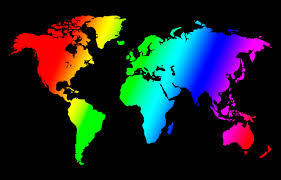
Another African country welcomes LGBT travelers with open arms
The African tourism world became larger and more beautiful for LGBT (Lesbian, Gay, Bisexual and Transgender) travelers.
After President & CEO David Scowsill of the World Travel and Tourism Council (WTTC) was a speaker at the recently concluded International Gay Lesbian Travel Association (IGLTA) Summit in South Africa, after South African Minister of Tourism The Honourable Mr Derek Hanekom, was a host and delivered a keynote speech at the same event, now also The Honourable Alain St.Ange, Minister of Tourism and Culture from the Seychelles is after the rainbow travel dollar.
He told eTurboNews: “Seychelles welcomes tourists with open arms. This include tourists regardless of origin, race, religious believe what includes sexual orientation.
Seychelles is a rainbow nation and had demonstrated this with the United Nations of Culture and the recent carnival and this move to decriminalize sodomy and respect the rights of people is seen as a positive move for the islands.”
This was a reaction after Seychelles’ National Assembly has passed an amendment to the penal code that decriminalizes the act of sodomy.
Currently LGBT travelers are welcome in South Africa, the French Vanilla Island Territory Reunion and now also in the Seychelles.
Homosexual activity between adults also has never been criminalized in Burkina Faso, Central African Republic, Chad, Republic of the Congo, Côte d’Ivoire, Democratic Republic of the Congo, Djibouti, Gabon, Madagascar, Mali, Niger, and Rwanda.
Benin and the Central African Republic, do not outlaw homosexuality, but have certain laws which apply differently to heterosexual and homosexual individuals.
In Uganda, Tanzania, and Sierra Leone, offenders can receive life imprisonment for homosexual acts. In addition to criminalizing homosexuality, Nigeria has enacted legislation that would make it illegal for straight family members, allies and friends of the LGBT to be supportive. According to Nigerian law, a straight ally “who administers, witnesses, abets or aids” any form of gender non-conforming and homosexual activity could receive a 10-year jail sentence. South Africa has the most liberal attitudes toward gays and lesbians, with a constitution which guarantees gay and lesbian rights and legal same-sex marriage.
Most of Africa has been known to high spending LGBT travelers to avoid. The exception was South Africa and the French territory Reunion where same sex marriages are legal and the LGBT community is fully protected. Now Seychelles can be added to a list of countries LGBT travelers are allowed and are welcomed to spend their money and enjoy exploring as a tourist.
Ironically the British introduces a law in the Seychelles during colonial times making same sex sexual acts a crime. After the election in Seychelles in his State of the Nation Address in February that the Seychelles President James Michel announced his government’s intention to repeal the 1955 law that criminalises sodomy.
